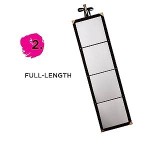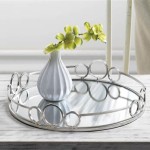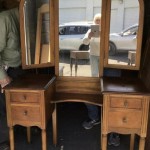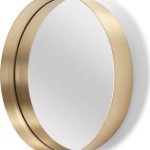Add Frame to Existing Bathroom Mirror: A Step-by-Step Guide for a Custom Look
Upgrading your bathroom mirror with a frame is an easy and effective way to elevate its style and transform the overall look of your bathroom. Adding a frame can also protect the mirror's edges from chipping or damage and provide a decorative accent that complements your bathroom's décor. Whether you're looking to enhance an existing mirror or create a completely new look, follow these steps to add a frame to your bathroom mirror:
1. Measure and Mark the Mirror
Start by measuring the height, width, and depth of the mirror. Note down these measurements and add at least 2 inches to each side to determine the size of the frame you will need. Use a pencil or painter's tape to mark these measurements on the wall behind the mirror, ensuring the frame will be centered when installed.
2. Choose the Frame Material
Consider various frame materials that suit your bathroom décor and personal preferences. Popular options include wood, metal, plastic, or composite materials. Wood frames provide a warm and classic look, while metal frames offer a modern and industrial touch. Plastic frames are lightweight and affordable, while composite materials offer durability and resistance to moisture.
3. Select the Frame Design
Browse different frame designs to complement the style of your bathroom. From intricate carvings to sleek and modern lines, there's a wide range of options available. Consider the shape of the mirror and the overall theme of your bathroom when choosing the frame design. A simple frame can enhance a minimalist bathroom, while an ornate frame can add a touch of elegance to a classic décor.
4. Cut and Assemble the Frame
If you're using wood or metal strips for the frame, cut them to the desired length and assemble them using miter joints. Use a miter saw for precise cuts and ensure the joints are secured with glue and nails or screws. For plastic or composite frames, follow the manufacturer's instructions for assembly.
5. Prepare the Mirror
Clean the mirror's surface thoroughly with a glass cleaner and a microfiber cloth. Remove any dust or debris that could affect the frame's adhesion. If necessary, apply a thin layer of adhesive primer to the mirror's edges to enhance the bond between the mirror and the frame.
6. Apply the Frame
Apply a generous amount of construction adhesive to the back of the frame. Carefully position the frame on the marked area on the wall, ensuring it's level and centered. Press the frame firmly into place and use painter's tape to secure it while the adhesive dries.
7. Allow Adhesion Time and Finishing Touches
Allow the adhesive to dry completely, following the manufacturer's recommended curing time. Once dry, remove the painter's tape and check for any gaps or uneven edges. If necessary, apply additional adhesive to fill any gaps and smooth out the edges. Depending on the frame material, you may want to paint or stain it to match your bathroom's décor.
Adding a frame to your bathroom mirror is a relatively simple and inexpensive project that can significantly enhance the look of your bathroom. By following these steps, you can create a custom-framed mirror that perfectly complements your décor and provides a stylish focal point for your bathroom.

How To Frame Out That Builder Basic Bathroom Mirror For 20 Or Less

Mirror Frame Diy How To Update A Basic Bathroom Our Faux Farmhouse

Bathroom Mirror Frames 2 Easy To Install Sources A Diy Tutorial Retro Renovation

How To Frame A Mirror

Diy Stick On Mirror Frame Sawdust Sisters

How To Add A Frame Your Bathroom Mirror

Diy Bathroom Mirror Frame Without Removing Clips Her Happy Home

Diy Bathroom Mirror Frame For Under 10 O Hayley Blog

Mirror Frame Diy How To Update A Basic Bathroom Our Faux Farmhouse

Easy Diy Tutorial Adding Trim Around A Giant Mirror For Ers








